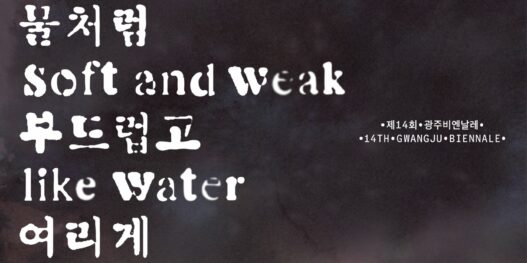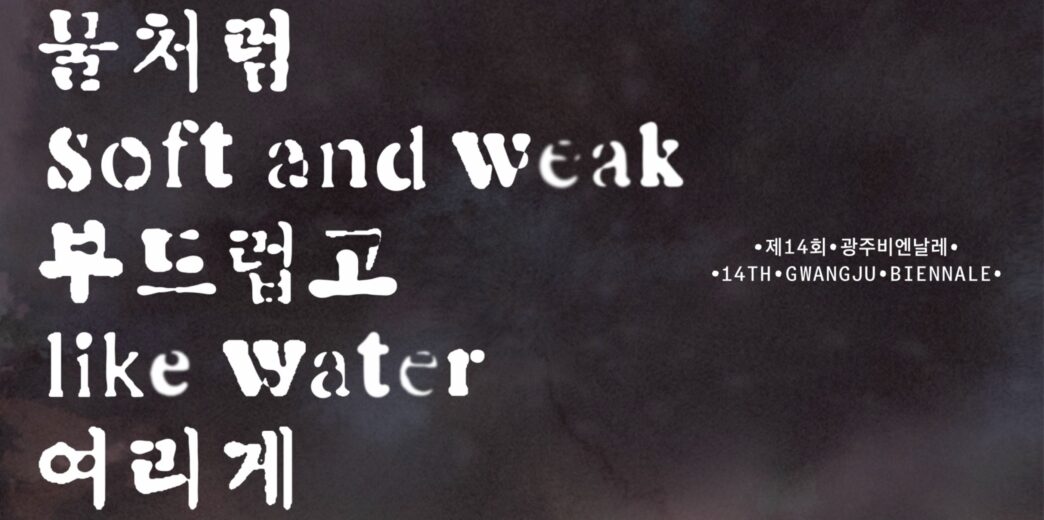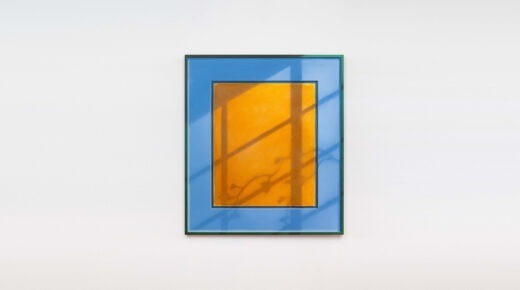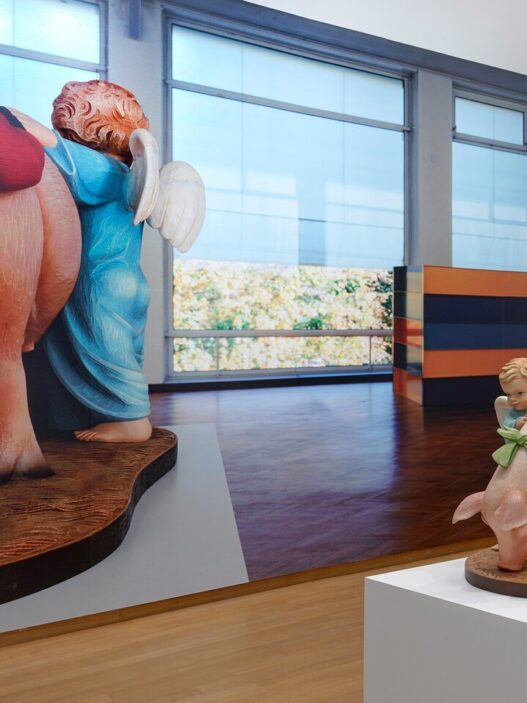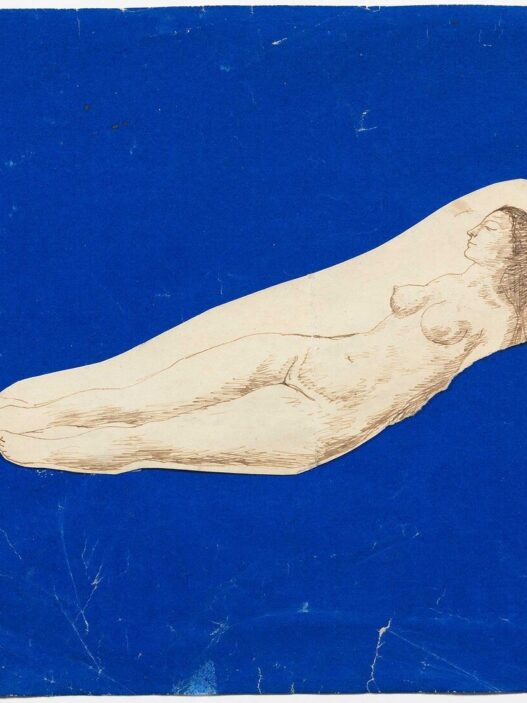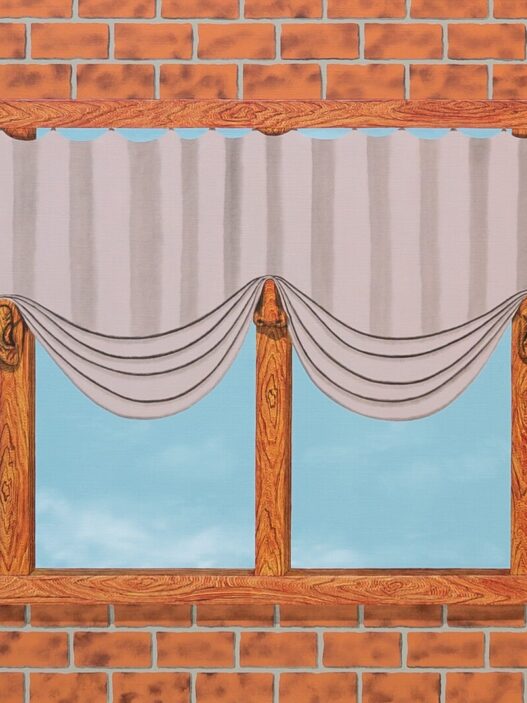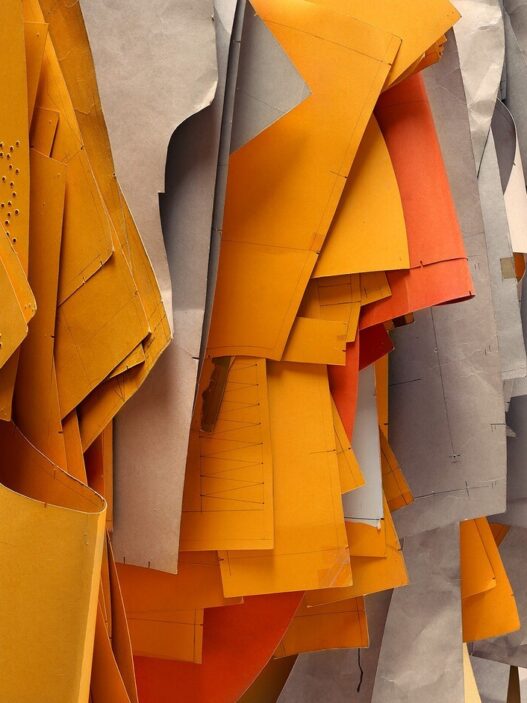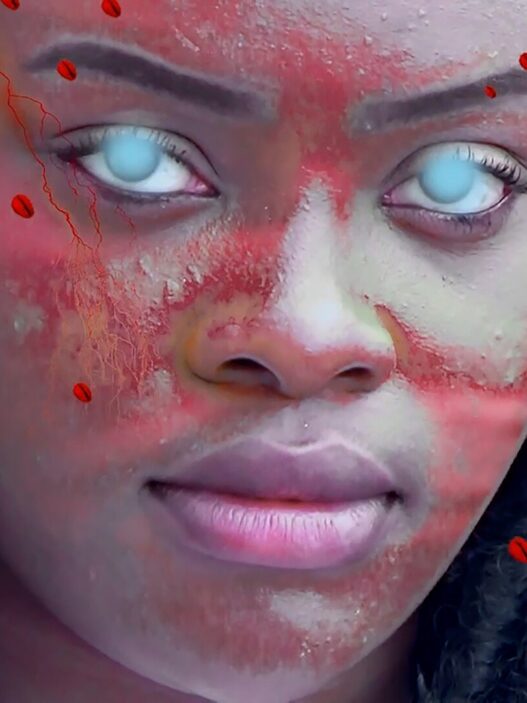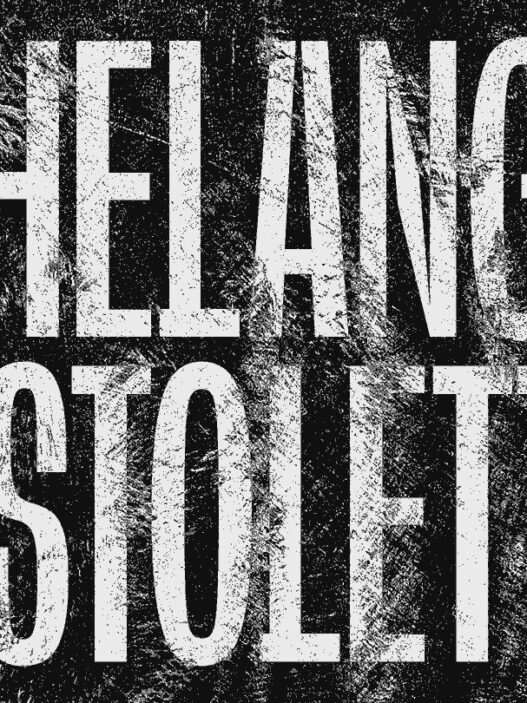April 7–July 9, 2023
The 14th Gwangju Biennale announces the first participating artists as well as early information on its curatorial themes, artist selection, artworks, venues, and public program. It is delicate and feeble like water. Over 40 commissioned projects and new works will be displayed at the Biennale, which will bring together about 80 artists from around the world. Artistic Director Sook-Kyung Lee, Associate Curator Kerryn Greenberg, and Assistant Curators Sooyoung Leam and Harry C. H. Choi are the curators of the Biennale.
The first participants to be announced are: Larry Achiampong, Abbas Akhavan, Farah Al Qasimi, Tarek Atoui, Bakhyt Bubikanova, María Magdalena Campos-Pons, Chang Jia, Latifa Echakhch, James T. Hong, Sky Hopinka, Huong Dodinh, Tess Jaray, Kang Yeon-gyun, Naiza Khan, Yuki Kihara, Christine Sun Kim, Kira Kim, Kim Kulim, Minjung Kim, Soungui Kim, Emily Kame Kngwarreye, Meiro Koizumi, Abdoulaye Konaté, Chila Kumari Singh Burman, Lee Kun-Yong, Lee Seung-taek, Kim Lim, Candice Lin, Tanya Lukin Linklater, Liu Jianhua, Guadalupe Maravilla, Noé Martínez, Mata Aho Collective, Mayunkiki, Alan Michelson, Małgorzata Mirga-Tas, Naeem Mohaiemen, Yuko Mohri, Betty Muffler, Aliza Nisenbaum, Lucia Nogueira, Oh Suk Kuhn, Oh Yoon, Oum Jeong Soon, Pangrok Sulap, Sopheap Pich, Taiki Sakpisit, Thasnai Sethaseree, Dayanita Singh, Buhlebezwe Siwani, Vivian Suter, Yu Jiwon, Yuma Taru, Charwei Tsai, Judy Watson, Alberta Whittle, Robert Zhao Renhui, David Zink Yi.
Themes and structure
Four subtopics will be used to further investigate the theme of the Biennale: Ancestral Voices promotes transnational artistic ways for interacting with and interpreting traditions to question and challenge modernist notions, while Luminous Halo places the spirit of Gwangju as a source of inspiration and a model for resistance and solidarity. Planetary Times examines the possibilities and constraints of a “planetary vision” on ecological and environmental justice, whereas Transient Sovereignty examines the ways in which post-colonial and de-colonial artistic ideas have evolved in connection to concerns like migration and diaspora.
Participating artists
Soft and weak like water uses the various personal histories, experiences, and understandings of each participant to avoid favoring singular viewpoints and ideas. In addition to responding to the Biennale’s themes and proposal, new works and commissions also reflect on the artist’s ongoing practice from a deeply personal, genuine perspective. As a First Nations artist, Sky Hopinka, for instance, incorporates his background into his work by focusing on locations and individuals who encourage him to reconsider his heritage in the present.
Korean artists from different generations
A meticulous selection of modern and contemporary Korean artists’ works is on display at the 14th Gwangju Biennale. These artists’ diverse viewpoints on the past, present, and future of Gwangju and larger Korea confound a monolithic picture of the country and its culture. The Biennale also seeks to broaden the geographic and historical context of what is considered to be the “Gwangju spirit” through a number of research-driven commissions and loans from national collections. The focus of Chang Jia’s work is on socially taboo practices as they relate to the female body, upending implicitly accepted systems of rules that regulate daily life.
Artists rethinking traditions
The Biennale showcases a diverse selection of works by practitioners that interact with the mediums and languages that are firmly ingrained in their various civilizations, highlighting the fluid linkages between traditions and cultures across geographical boundaries. In order to provide a thorough understanding of the artist’s ancestry, the Biennale has commissioned Noé Martnez to create a series of ceramic pieces that are inspired by sculptural forms found in the Huasteco neighborhood. Tanya Lukin Linklater addresses the connections created by a cultural item among individuals who are separated in time by using kohkom scarves worn by indigenous women in Canada of all generations.
Underrepresented women artists
Unknown female artists from many generations and cultures are given importance at the Biennale. They range from new voices from Almaty and Cape Town, many of whom are presented for the first time in Korea, to community elders from Aboriginal and Torres Strait Islander areas like Emily Kame Kngwarreye and Betty Muffler. In her work, Buhlebezwe Siwani addresses the long-lasting effects of colonization and the repression of indigenous knowledge by drawing on the experience of Black women in South Africa.
Artists working with the history of Gwangju
Soft and weak like water tries to reimagine the waves of change the city and its inhabitants generated through modern art by posing the question of what it means to think of Gwangju as more than just a geography or location but also as a paradigm and a manual. The recently commissioned work by Aliza Nisenbaum will include paintings and sketches that are based on her interactions with the Gwangju-based Shinmyeong theater company. The Sabah-based collective Pangrok Sulap is using woodcut printmaking to examine the lingering effects of the May 18 Democratization movement. In a multi-channel video piece that Soungui Kim is creating, students from Chonnam Girls’ High School recite poems by significant historical Korean women poets.









